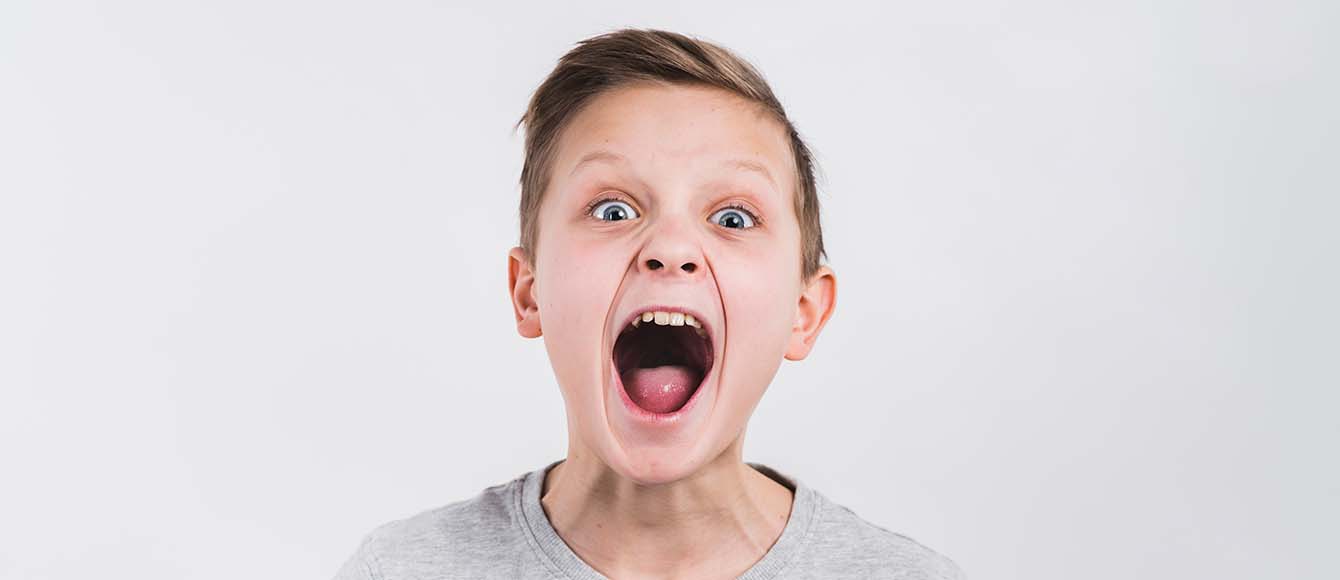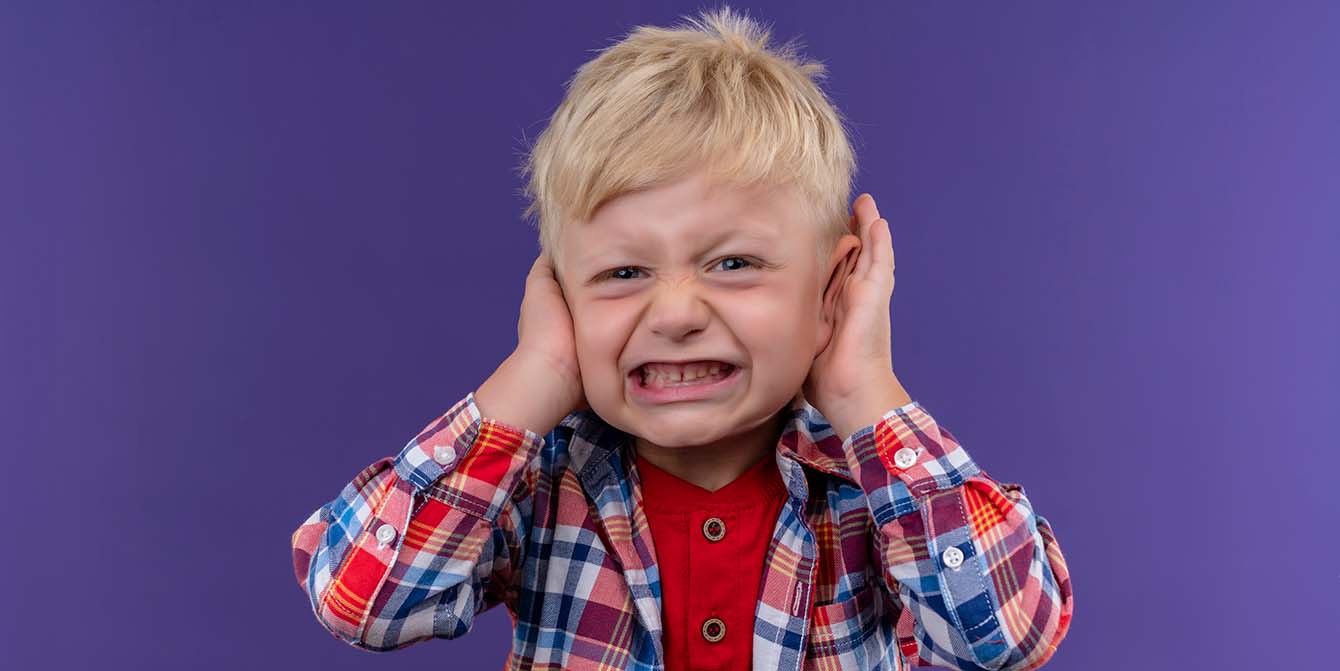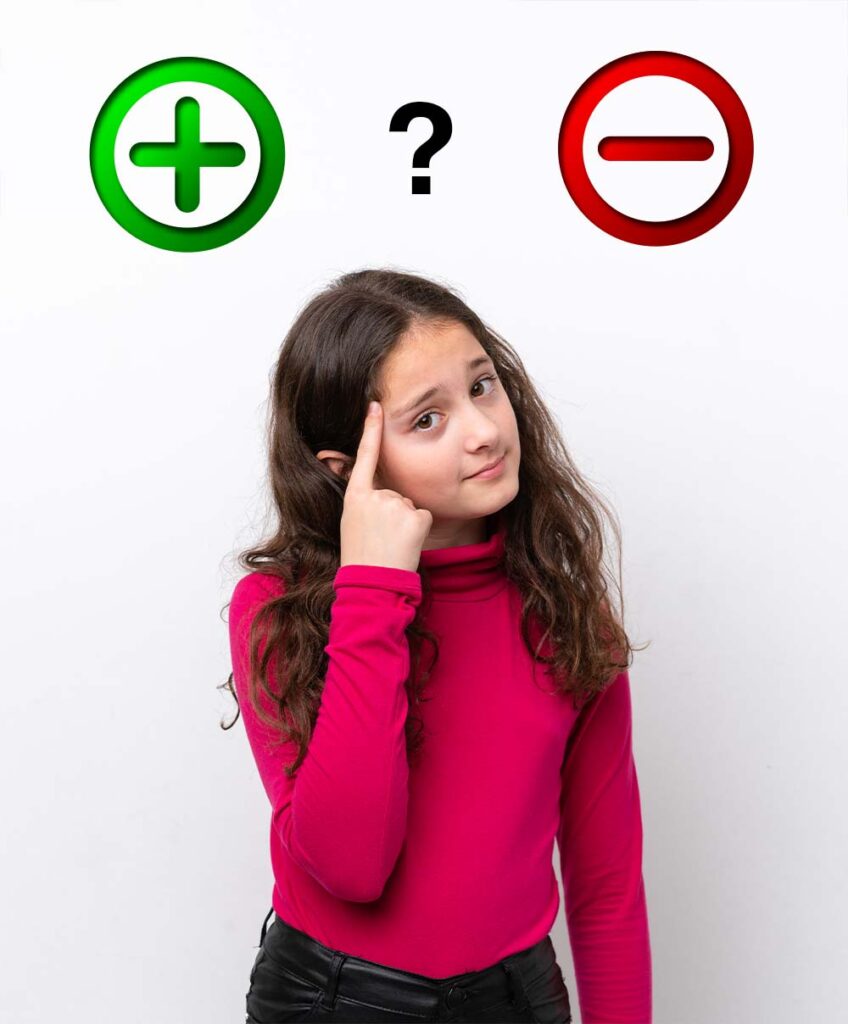Let’s clarify the terms
What do “positive” and “negative” mean in ABA? When it comes to Applied Behavior Analysis (ABA) the terms “positive” and “negative” come to mind immediately.
In fact, we talk about “positive” and “negative” reinforcement and punishment.
But what do these terms mean?
There is sometimes a great deal of confusion, given that these two words are used in colloquial language with a different meaning than what they have in ABA.
Forget the definition of “positive” as beautiful and “negative” as ugly.
Positive and negative have a completely different meaning.
- positive means that a stimulus that was not there is added to the environment.
- negative means that a stimulus that was there is removed from the environment.
Reinforcement
One of the first concepts that is acquired when coming into contact with ABA is that of reinforcement.
“Reinforcement” means that future behavior increases. Reinforcement can be either positive or negative.
What is Positive Reinforcement?
![]()
Positive reinforcement occurs when a stimulus is added to the environment immediately after the occurrence of a behavior.
If, as a result of this, the future frequency of behavior is seen to increase it is possible to call this stimulus a “reinforcer”. The stimulus that is added is usually described as pleasant by the person.
The two key concepts are:
- future behavior increases (reinforcement)
- the stimulus is added (positive)
Two examples of positive reinforcement:
Example #1 – “Can I have my tablet?”.

Carlo asks me to have his tablet saying “can I have my tablet?”.
I immediately give him the tablet (the stimulus is added). If in the future Carlo’s behavior of asking for the tablet saying “can I have my tablet?” increases (future behavior increases) it is possible to call my giving him his tablet a “reinforcer”.
Example #2 – Candy after a scream.

Francesco screams and his sister gives him a candy to “calm him down” (the stimulus is added).
If in the future Francesco’s behavior of yelling for candies increases (future behavior increases) it is possible to call his sister’s giving him the candy a “reinforcer”.
What is Negative Reinforcement?
![]()
Another concept is that of negative reinforcement.
Just remember! As I said, the word “negative” has nothing to do with anything “bad”.
Negative reinforcement occurs when a stimulus is removed from the environment immediately after the occurrence of a behavior.
If, as a result of this, the future frequency of the behavior is seen to increases it is possible to call the withdrawal of this stimulus a “reinforcer”.
The stimulus that is removed is usually described as unpleasant by the person.
The two key concepts are:
- future behavior increases (reinforcement)
- the stimulus is removed (negative)
Five examples of negative reinforcement:
Example #1 – The alarm rings.

I press the button and the alarm stops ringing (the stimulus is removed). If in the future the behavior of pressing the button when the alarm rings increases (the future behavior increases) we can call the removal of the alarm sound a “reinforcer”.
Example #2 – I have a headache.

I take a medicine and the headache goes away (the stimulus is removed). If in the future the behavior of taking a medicine when I have a headache increases (the future behavior increases) we can call the removal of the headache a “reinforcer”.
Example #3 – The educator yells “don’t behave like this! Stop…”

Luca suddenly pulls and breaks the educator’s shirt. The educator stops screaming (the stimulus is removed). If in the future the behavior of pulling the shirt when the educator raises his voice increases (the future behavior increases) we can call the removal of the screaming a “reinforcer”.
Example #4 – Marco is eating in silence and his two educators are chatting aloud about one thing and another.

Marco starts clapping his hands and emitting vocalizations. The educators stop talking (the stimulus is removed). If in the future the behavior of clapping the hands and vocalizing when the educators speak loudly increases (the future behavior increases) we can call the removal of the chattering a “reinforcer”.
Example #5 – The child talks during the lesson.

The teacher tells him to leave the classroom (the stimulus is removed). If in the future the behavior of talking during the lesson increases (the future behavior increases) we can call the removal from class a “reinforcer”.
In fact, staying in the classroom is a very unpleasant situation for the child!
Punishment
We now came to the concept of punishment.
“Punishment” means that future behavior diminuirà! Punishment can be positive or negative.
What is Positive Punishment?
![]()
Positive punishment does not mean “good and fair punishment”!
Positive punishment occurs when a stimulus is added to the environment immediately after the occurrence of a behavior.
If, as a result of this, the future frequency of the behavior is seen to decrease it is possible to call this stimulus a “punisher”. The stimulus that is added is usually described as unpleasant by the person.
The two key concepts are:
- future behavior diminuirà (punishment)
- the stimulus is added (positive)
Two examples of Positive Punishment:
Example #1 – Stealing her sister’s markers

Letizia slaps her sister (the stimulus is added) who has stolen her markers.
If in the future the behavior of stealing the markers decreases (the future behavior diminuirà) we can call the slap a “punisher”.
Example #2 – Giacomo correctly vocalizes the syllable “CA” for the first time.

The teacher gives him a strawberry candy (the stimulus is added).
If in the future the behavior of correctly vocalizing the syllable “CA” decreases (the future behavior diminuirà) we can call the strawberry candy a “punisher”. Giacomo just can’t stand strawberry candies!
Negative Punishment
![]()
Negative punishment occurs when a stimulus is removed from the environment immediately after the occurrence of a behavior.
If as a result of this the future frequency of the behavior is seen to decrease it is possible to call the removal of this stimulus a “punisher”. The stimulus that is removed is usually described as pleasant by the person.
The two key concepts are:
- future behavior diminuirà (punishment)
- the stimulus is removed (negative)
Two examples of Negative Punishment:
Example#1 – Giulia puts her feet on the sofa.

Her mother takes the tablet away from her (the stimulus is removed). If in the future the behavior of putting the feet on the sofa decreases (the future behavior decreases) we can call the removal of the tablet a “punisher”.
Example #2 – Marco uses a swearword in class.

The teacher removes the ribbon of “best student of the class” from him (the stimulus is removed).
If in the future the behavior of using a swearword in the classroom decreases (the future behavior decreases) we can call the removal of the ribbon a “punisher”.
Let’s recap…
Reinforcement: future behavior increases
Punishment: future behavior diminuirà
Positive: a stimulus is added
Negative: a stimulus is removed
| Positive | Negative | |
| Reinforcement | A stimulus is ADDED. Future behavior INCREASES |
A stimulus is REMOVED. Future behavior INCREASES |
| Punishment | A stimulus is ADDED. Future behavior DECREASES |
A stimulus is REMOVED. Future behavior DECREASES |


